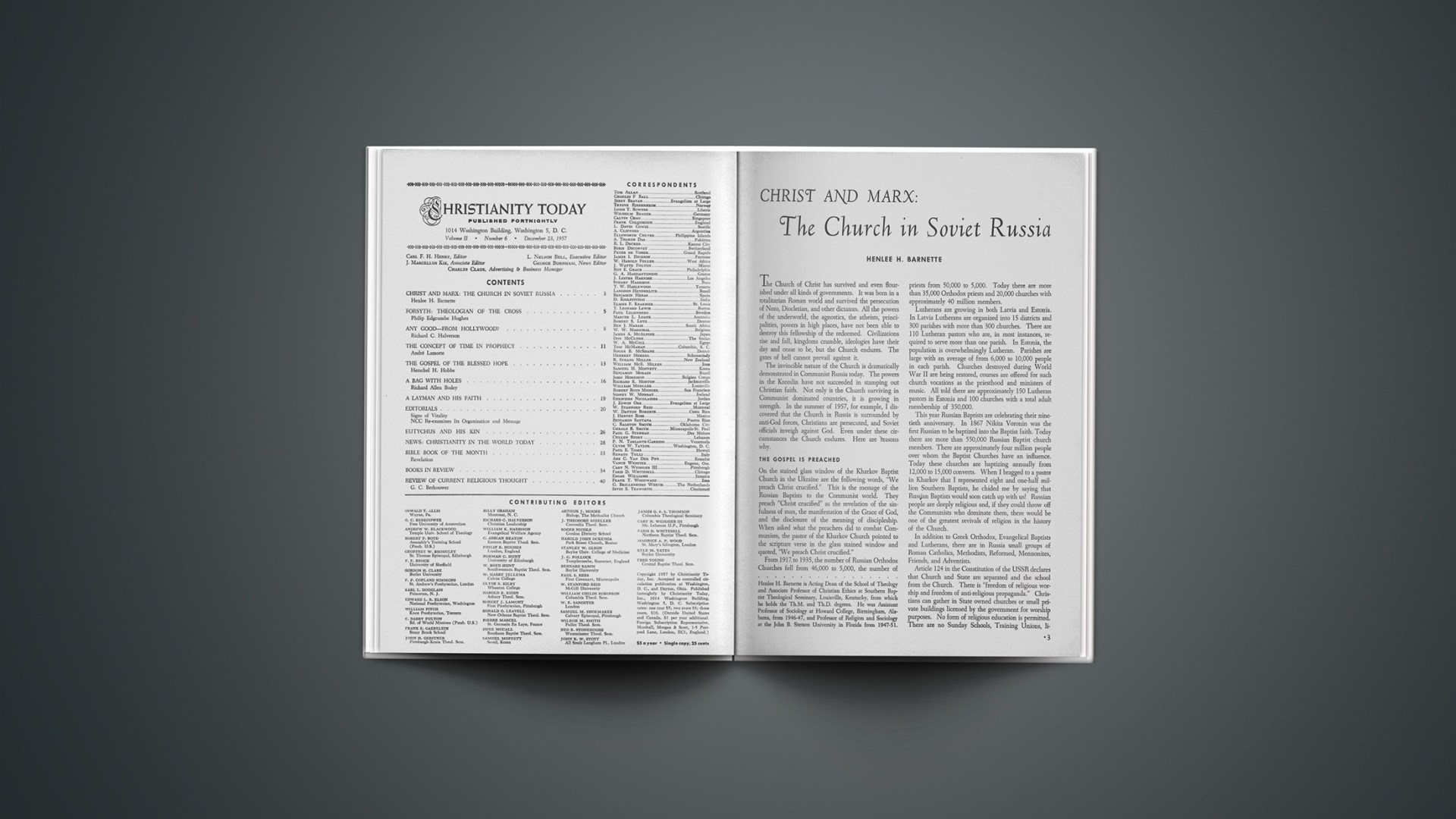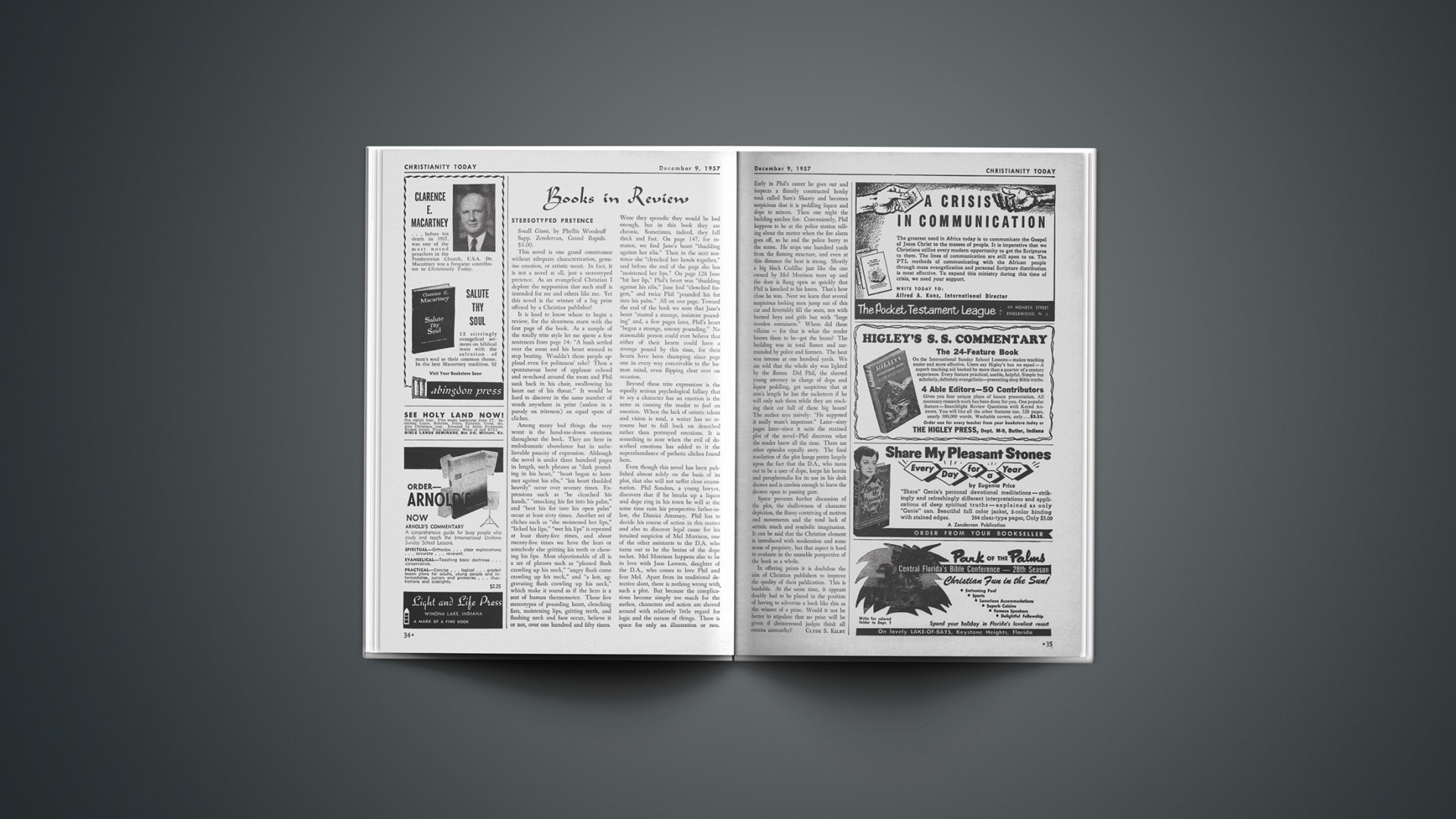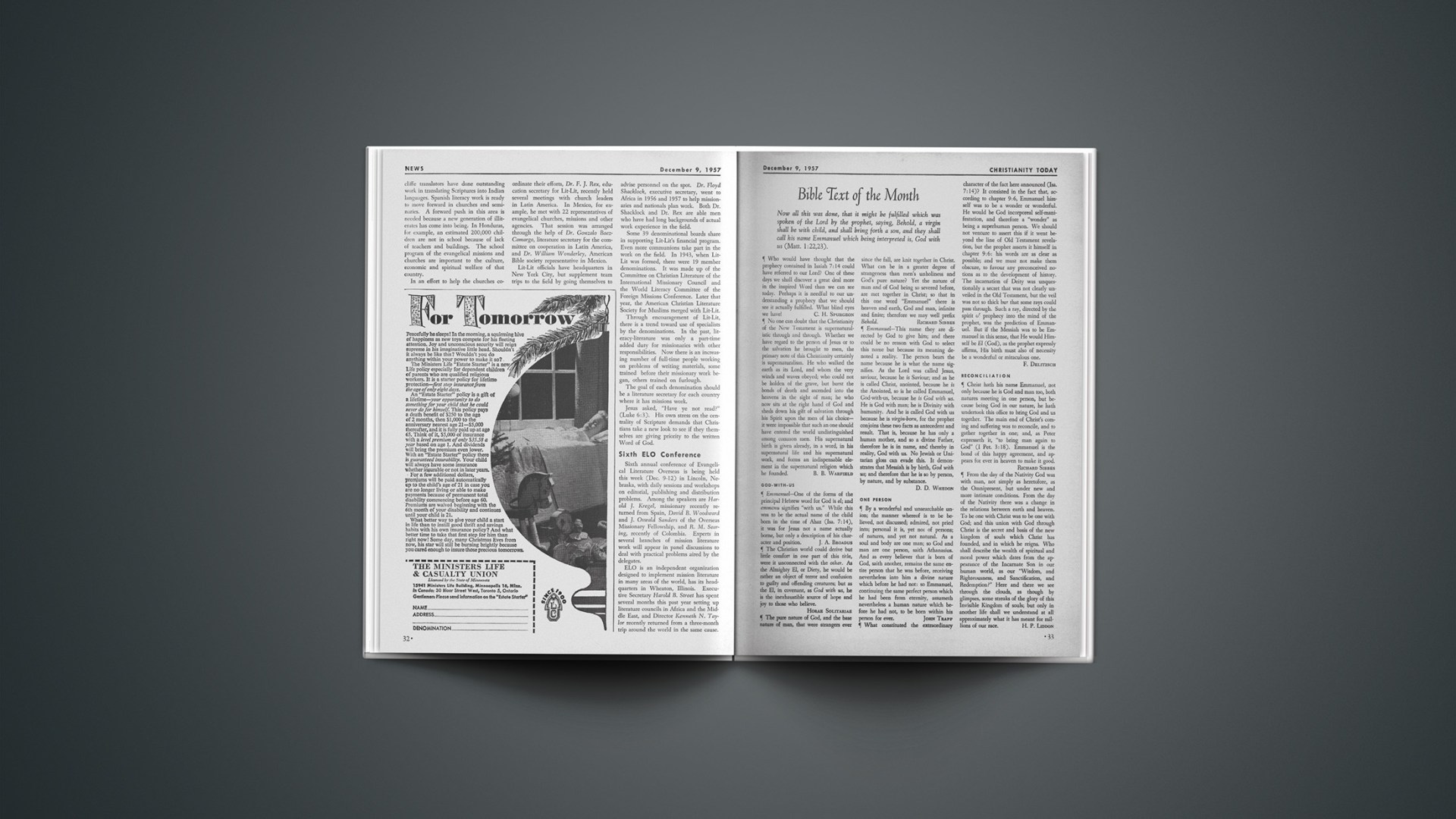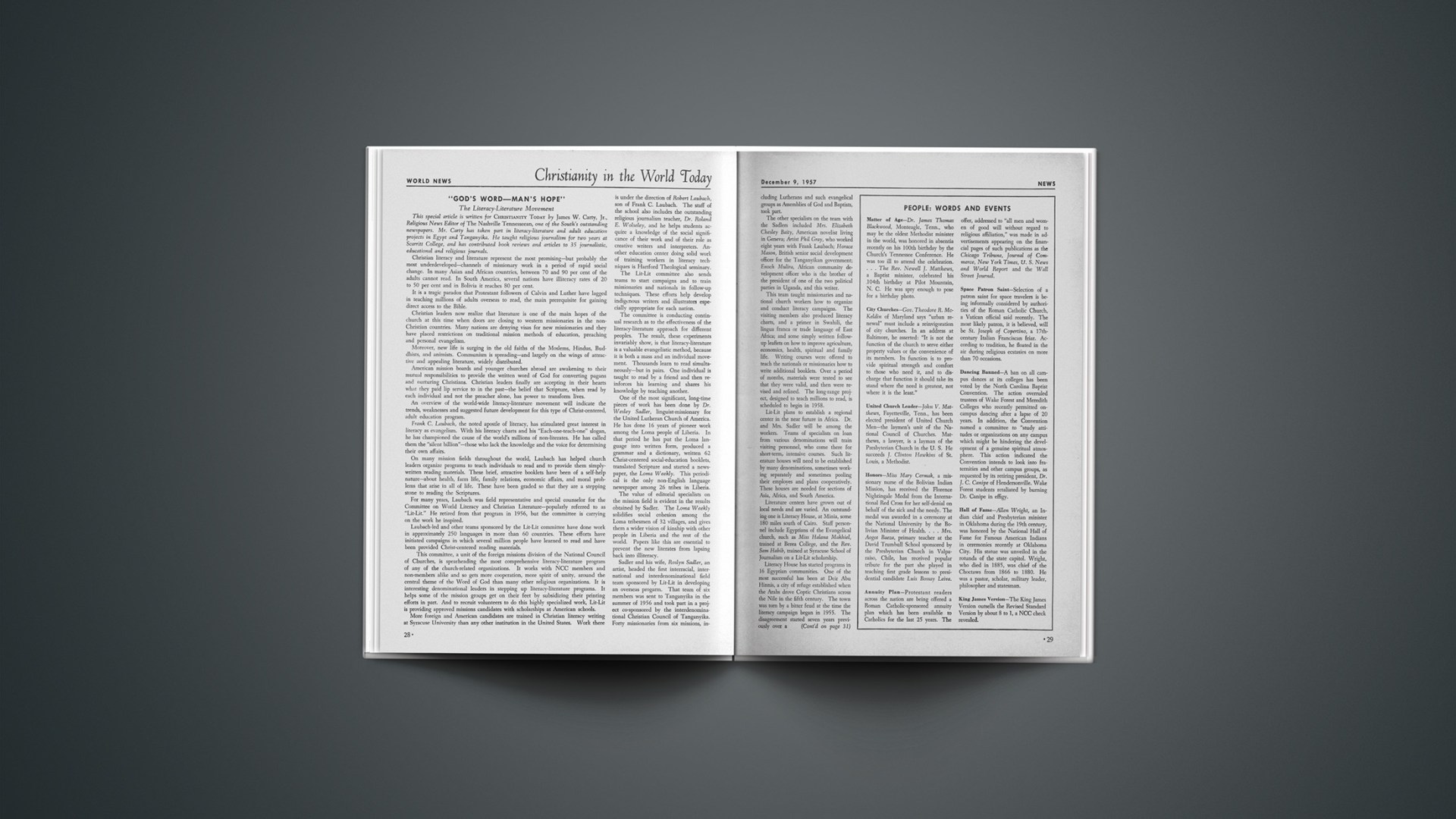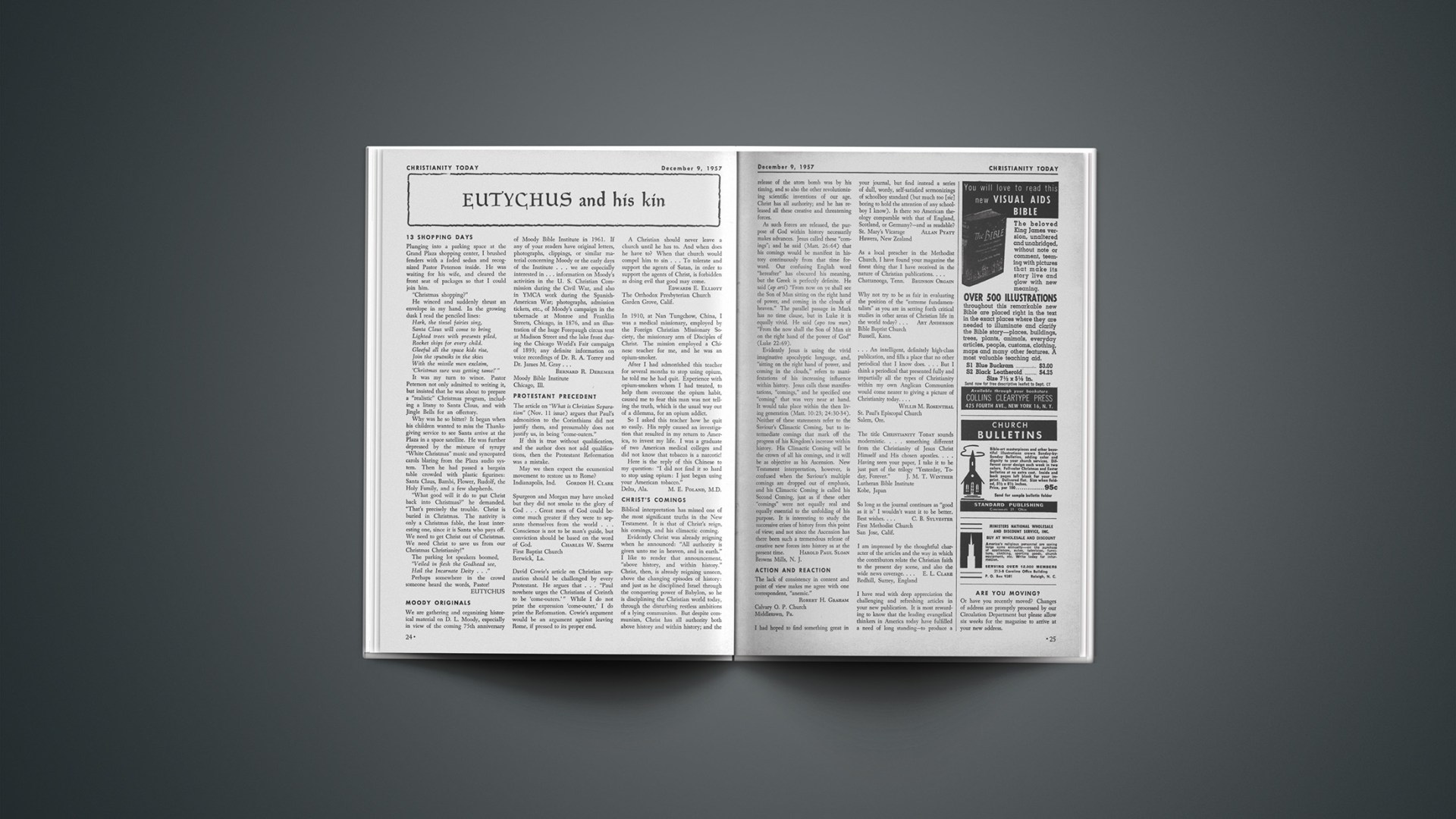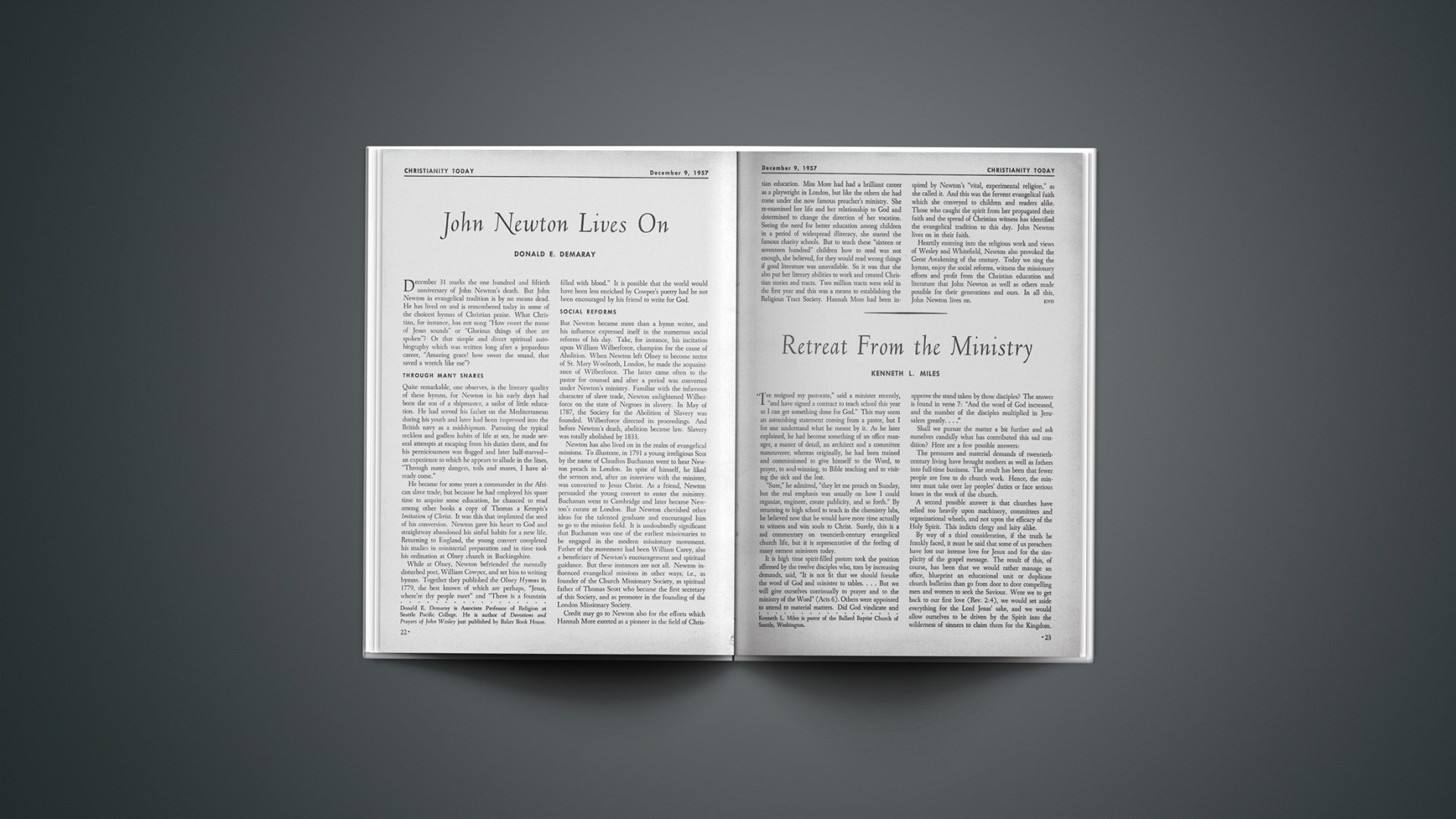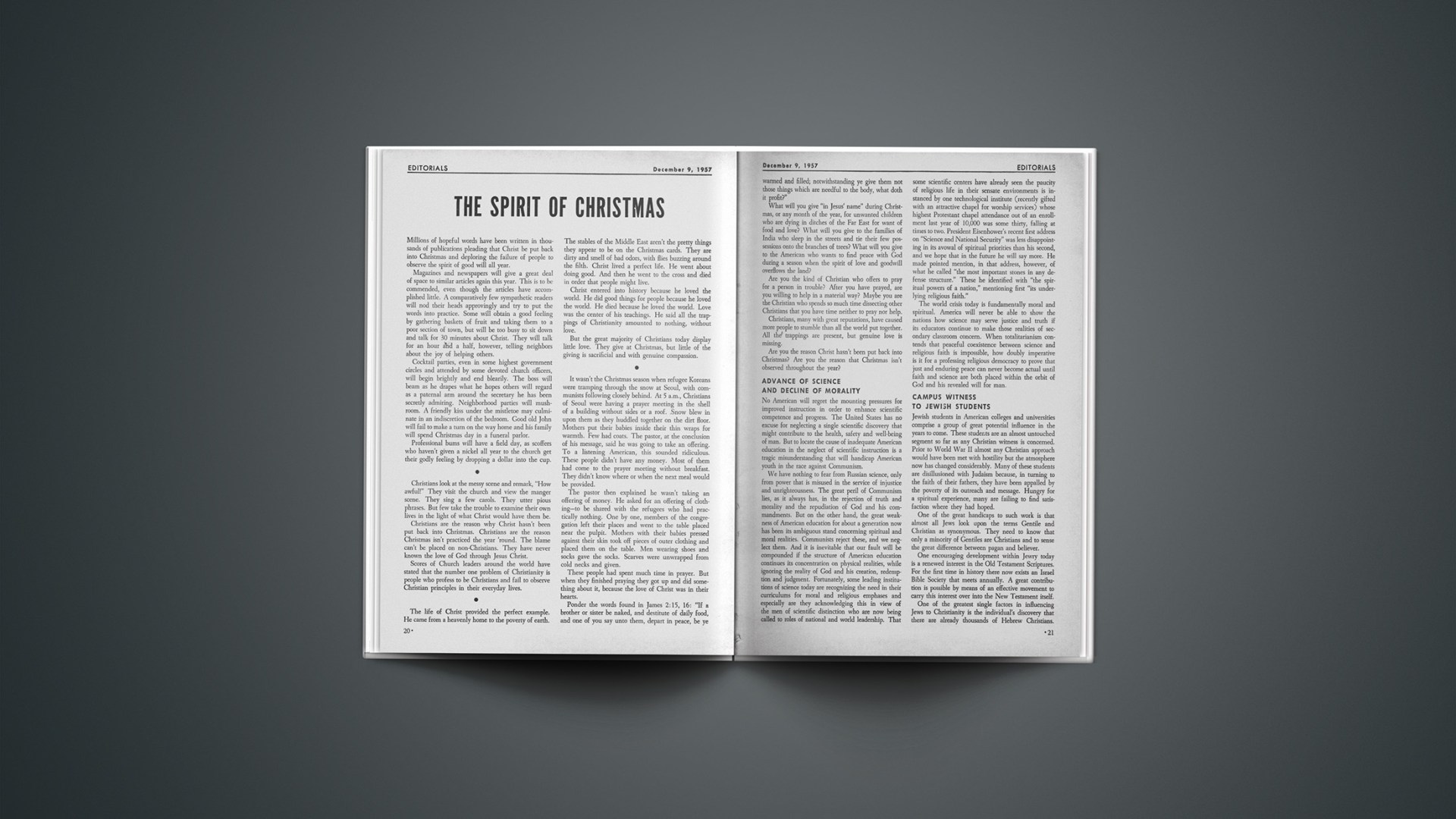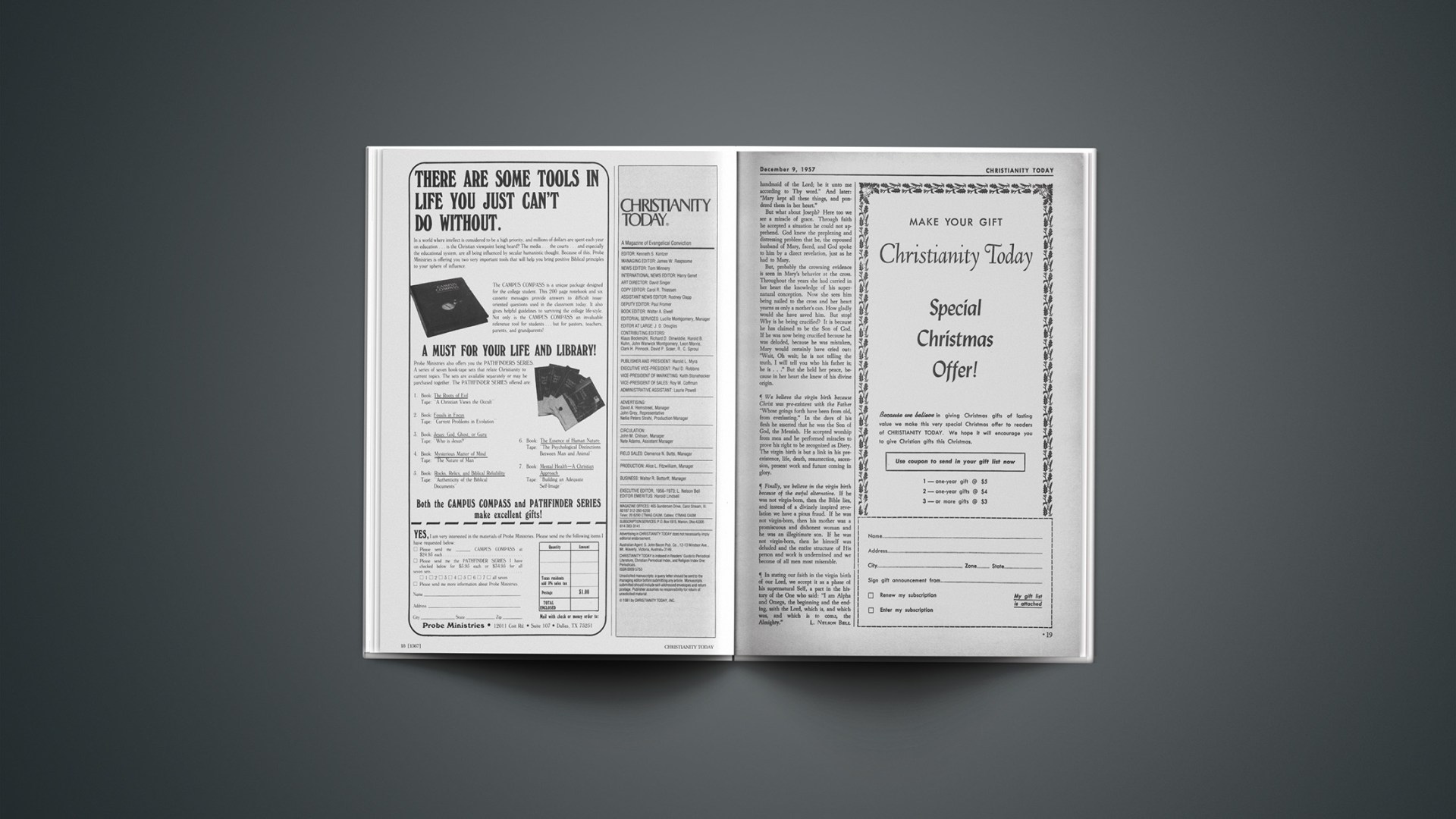The Church of Christ has survived and even flourished under all kinds of governments. It was born in a totalitarian Roman world and survived the persecution of Nero, Diocletian, and other dictators. All the powers of the underworld, the agnostics, the atheists, principalities, powers in high places, have not been able to destroy this fellowship of the redeemed. Civilizations rise and fall, kingdoms crumble, ideologies have their day and cease to be, but the Church endures. The gates of hell cannot prevail against it.
The invincible nature of the Church is dramatically demonstrated in Communist Russia today. The powers in the Kremlin have not succeeded in stamping out Christian faith. Not only is the Church surviving in Communist dominated countries, it is growing in strength. In the summer of 1957, for example, I discovered that the Church in Russia is surrounded by anti-God forces, Christians are persecuted, and Soviet officials inveigh against God. Even under these circumstances the Church endures. Here are reasons why.
The Gospel Is Preached
On the stained glass window of the Kharkov Baptist Church in the Ukraine are the following words, “We preach Christ crucified.” This is the message of the Russian Baptists to the Communist world. They preach “Christ crucified” as the revelation of the sinfulness of man, the manifestation of the Grace of God, and the disclosure of the meaning of discipleship. When asked what the preachers did to combat Communism, the pastor of the Kharkov Church pointed to the scripture verse in the glass stained window and quoted, “We preach Christ crucified.”
From 1917 to 1935, the number of Russian Orthodox Churches fell from 46,000 to 5,000, the number of priests from 50,000 to 5,000. Today there are more than 35,000 Orthodox priests and 20,000 churches with approximately 40 million members.
Lutherans are growing in both Latvia and Estonia. In Latvia Lutherans are organized into 15 districts and 300 parishes with more than 300 churches. There are 110 Lutheran pastors who are, in most instances, required to serve more than one parish. In Estonia, the population is overwhelmingly Lutheran. Parishes are large with an average of from 6,000 to 10,000 people in each parish. Churches destroyed during World War II are being restored, courses are offered for such church vocations as the priesthood and ministers of music. All told there are approximately 150 Lutheran pastors in Estonia and 100 churches with a total adult membership of 350,000.
This year Russian Baptists are celebrating their ninetieth anniversary. In 1867 Nikita Voronin was the first Russian to be baptized into the Baptist faith. Today there are more than 550,000 Russian Baptist church members. There are approximately four million people over whom the Baptist Churches have an influence. Today these churches are baptizing annually from 12,000 to 15,000 converts. When I bragged to a pastor in Kharkov that I represented eight and one-half million Southern Baptists, he chided me by saying that Russian Baptists would soon catch up with us! Russian people are deeply religious and, if they could throw off the Communists who dominate them, there would be one of the greatest revivals of religion in the history of the Church.
In addition to Greek Orthodox, Evangelical Baptists and Lutherans, there are in Russia small groups of Roman Catholics, Methodists, Reformed, Mennonites, Friends, and Adventists.
Article 124 in the Constitution of the USSR declares that Church and State are separated and the school from the Church. There is “freedom of religious worship and freedom of anti-religious propaganda.” Christians can gather in State owned churches or small private buildings licensed by the government for worship purposes. No form of religious education is permitted. There are no Sunday Schools, Training Unions, libraries, handcraft clubs, or organized groups. The churches sponsor no hospitals, orphan’s homes, or any sort of welfare program. Such would be an offense to the government which claims to care for everyone’s social needs from the cradle to the grave. Preachers are not allowed to criticize the government. Those who have challenged the Communists have suffered persecution. Some have been shot, others sent to Siberia and to slave labor camps.
But in spite of a limited religious freedom, the churches are growing. Recently, the Communist press printed 15,000 hymn books for Baptists along with a few Bibles. This is the same Communist press which has turned out tons of anti-God literature. Today it is turning out Bibles for domestic use and for export. The Ambassador of Sweden to Russia told a group of us that the Russian government has been more considerate of the Church due to the fact that during World War II it needed the aid of the Church. Hence, the Communists became less hostile to religion in Russia purely for political purposes. Another reason for the so-called “soft policy” toward the churches is due to the fact that so many of the letters came from Russian soldiers on the battlefields and in the hospitals begging their Christian parents to pray for them. Indeed so many of these letters were written that the government officials began to discourage any serious attacks upon the churches and Christian people.
Young People And Faith
With the exception of the Baptist Church in Russia, the churches are filled with adults. About twenty percent of those who attend Baptist Churches are young people. A number of these youths are preparing themselves for leadership in churches in the offices of pastors, choir directors, deacons, deaconesses and lay preachers. Another evidence of the strong appeal of the Christian faith to the youth of Russia is seen in the fact that during the summer of 1957, 400,000 young people were expelled from the Komsomols (Young Communist League). They were guilty of “immorality” and attendance at religious services. This is happening in spite of the fact that all their lives these young people have been taught by their public school teachers that God is a myth and that religion is a superstition. Recently the Kremlin has become alarmed at this rising interest of youth in religion. School teachers are given slogans to pass along to the children. They read, “Religion is poison.” “Food comes from collective farms, not Christ.” “When God is forgotten life is better.” Teachers are urged to use every means available to combat the Christian faith.
In July, 1957, two communist guides accompanied a group of Americans, of which I was a member, to the Baptist Church in Moscow. It was the guides’ first time to be in a church service. The Holy Spirit worked so mightily upon their hearts that one of them went out of the church in the middle of the worship service. During the singing of the closing hymn I turned to see tears upon the other one’s cheeks. God’s spirit had moved upon their hearts. Thereafter they became more tolerant and concerned about the Christian way of life. Perhaps someday these young people will make a clean break with the godless Communists.
God’S “Rod Of Anger”
Communism could be God’s judgment upon the Church of Russia. The Greek Orthodox Church had become political and worldly. Today the magnificent church buildings of Russia have been made into museums. A church can become a museum, passing on embalmed traditions, if it loses a concern for the needs of the people. I talked with Metropolitan Nicolai of Moscow who also holds the position of Vice-Patriarch of all the Greek Orthodox Churches of Russia. He admitted that the Communist revolution made at least one positive contribution to the Greek Orthodox Church. He explained by saying that prior to the revolution the church forced everyone, atheists and believers, to belong to the church and to attend the services, and to support the churches financially. Now, he observed, that the church and State are separate and that only those who really want to attend church are present at the services.
Another reason the Church in Russia can take heart is the presence of the living Christ. Professor Emil Brunner, attending a conference of Christian workers from all countries, met a young Russian who as an officer of the Russian army was taken prisoner for five years and had been doing Christian work among fellow prisoners. His father, who was once a diplomat and later turned to the priesthood, was so persecuted by the Communist party that his wife, the mother of the young man, collapsed and died in terror. One night his father was taken away and disappeared in the mines of Siberia. The young man told how he had been present at an Easter service in the region of Odessa back in 1940. Forty thousand Christians came to this Eastertide celebration in order to worship. The Communists organized a counterblast assembly to disturb the Christian worship in every way possible. Later they compelled the 40,000 people to listen to their godless Communist propaganda for hours. Then one of the Christians got up and announced his desire to speak. He was at first refused, but when he promised to say only four words they allowed him to come to the platform. These were his words: “Brothers and sisters, Christ is risen.” The whole 40,000 responded with the Easter greeting: “Yes, he has risen indeed.” After 40 years of suffering at the hands of the Communists the people held fast to their convictions that they were serving a living Christ. Today more than 50 million Russians profess faith in the Lord Jesus Christ.
In Soviet dominated Poland the Church is manifesting new life and strength. Recently I visited Warsaw of which seventy per cent was destroyed during the last war. On the facade of a rebuilt church were these challenging words: Sursum Corda. In the midst of rubble, ruin, and a Communist State, here is a church with a message of hope—Lift up your heart!
The Church will triumph. During the racial movements in the fifth century the Roman Empire fell but the Church endured. The renaissance of the fifteenth century uprooted the medieval way of life, but the Church survived. The Church was divided in the Reformation of the sixteenth century, but all branches became stronger. The Church suffers under the Red regime in contemporary Russia. She will never be at peace while the Communists rule, but the gates of hell shall not prevail against her. Sursum Corda!
Henlee H. Barnette is Acting Dean of the School of Theology and Associate Professor of Christian Ethics at Southern Baptist Theological Seminary, Louisville, Kentucky, from which he holds the Th.M. and Th.D. degrees. He was Assistant Professor of Sociology at Howard College, Birmingham, Alabama, from 1946–47, and Professor of Religion and Sociology at the John B. Stetson University in Florida from 1947–51.

